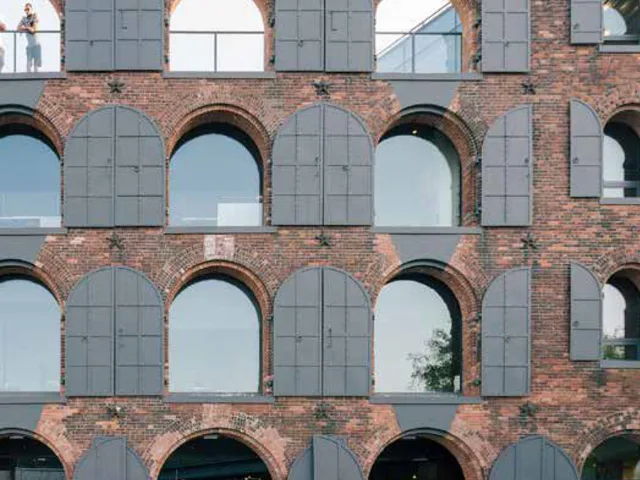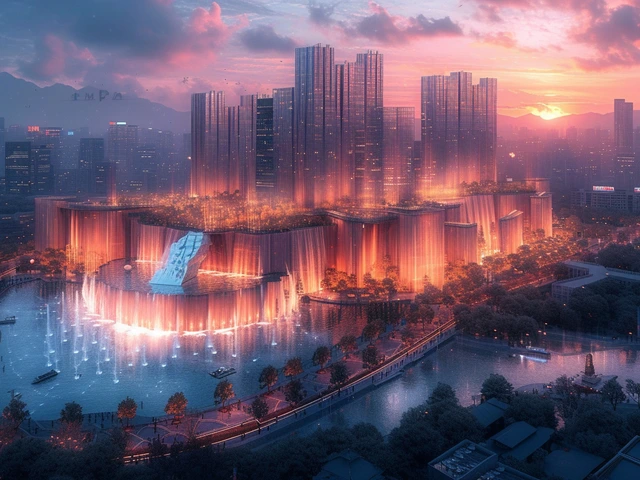The Unnerving Rise of Constructivist Architecture
There's a fascinating discourse to be had around how constructivist architecture is gradually and unequivocally moulding our cities. Even though my earlier life was consumed by English Literature, I became entranced by the intricacy and novelty of this architectural feat. As my eyes rove across the skies from the park where I sit with my kids, Oswald and Florence, or take Baxter, our Scottish terrier out on a peregrination, I find the juxtaposition of this novel style with the older prevalent styles in our city quite mesmerising.
Now, one might be wondering where this fascination came from. It was on my travels across Europe that I came across some majestic examples of this architectural trend. The Russian constructivism movement, the heart and soul of constructivist architecture, immediately caught my attention. And the impact it has had on the cityscapes globally is indeed the subject worth delving into deeper.
Grasping the Essence of Constructivism
In essence, constructivism echoes the notion of 'form follows function', an idea which has its roots in the crystalline sphere of modernism. It avoids unnecessary decoration or frills, and lets the purpose of the structure dictate the design. Imagine a building as an open book, telling its story through its form, columns, and girders. As intriguing as it may sound, the idea had me hooked from the beginning.
Cast your memory back to your geometry lessons; the fantastic world of shapes, lines, and forms. Now imagine all those elements coming together to build not just structures, but narratives. That is constructivism, in nutshell. As a father who has spent considerable time constructing bizarre lego structures with Oswald and Florence, my appreciation for this deliberate simplicity and focus on fundamental geometric forms has grown multifold.
A Deep Dive into the Historical Roots
Constructivist architecture, etymologically as well as philosophically, dates back to post-World War I Russia. The whirlpool of societal upheaval led to a collective push towards the new, the modern, and by consequence, the industrial. The structures stemming from this movement were metaphorically and sometimes literally a machine for living, with their clean lines and utilitarian design. It was used as a means to break away from the past, reflecting the political ethos of the era.
Imagine the societal determination required to spurn established norms and build like never before. It’s like finally telling Baxter that he’s not getting any more table scraps and sticking to it. When you contextualise the architecture in its historical setting, it begins to grow on you, not just as a stylistic choice but also as a symbol.
The Visual Aesthetics that Speak Volumes
Constructivist architecture garners a lot of attention due to its stark contrast with typical architectural styles. There are many examples where this type of design has astounded the onlookers and stirred debates around their aesthetic charm. Especially with emerging urban landscapes, dramatic high-rises with their hard geometric lines cut silhouettes against the sky that are nothing short of an arresting visual.
Lend your gaze to these structures and you're likely to find yourself drawing parallels between the varied geometric forms that shape up our cities, not unlike an abstract painting. Surface designs, love for pure color, and treatment of space all give the subtly powerful visual impact which is undeniary.
Constructivist Architecture and Urban City Planning
One of the most profound impacts of constructivist architecture is its influence on the trajectory of urban city planning. This type of architecture has proven to be very adaptable, with its principles being applied to anything from housing to administrative buildings to public institutions. This lends to shaping cities that are versatile, aesthetically distinct and reflective of their times.
Entwining function with form in this fluid manner leads to a thoughtful utilisation of space, enhancing the city landscape and providing creative solutions to urban living. Consequently, they’re becoming the favored choice for many modern cities around the globe.
Implications on Society and Lifestyle
The shift towards constructivist architecture has a significant influence on the society and lifestyle of an era. Not only does it emanate a sense of modernity, but it also tells a greater societal story through its form. The emphasis on functionality ensures that these structures usually provide a high quality of life and open up new avenues for social interaction.
For example, one could easily argue that a constructivist-leaning open floor plan notion has made my home a lively hub where I can write my blogs while bearing witness to Oswald's latest Lego feat, or Florence's artistic strokes, with Baxter snoozing comfortably in his corner. It's in these moments that the beauty of such intersecting, multi-purpose spaces truly shines.
The Future That Lies Ahead
Last but not least is the question of what lies ahead for constructivist architecture. Are we going to witness a farther surge in its popularity, or will it wane just as many architectural trends of the past? My intuitive guess is that this design philosophy is not going anywhere anytime soon. Indeed, social and technological disruptions will keep fuelling this transition, just as they gave birth to it in the first place.
This architectural trend represents freedom, liberation from the restraints of form. If you feel an emotional connection to buildings like me, you might also find the debate surrounding constructivist architecture particularly riveting. So let's keep our eyes on the horizon, and watch as the cities of the future rise and transform with every brick laid in the fascinating constructivist style.





Leave a Comments